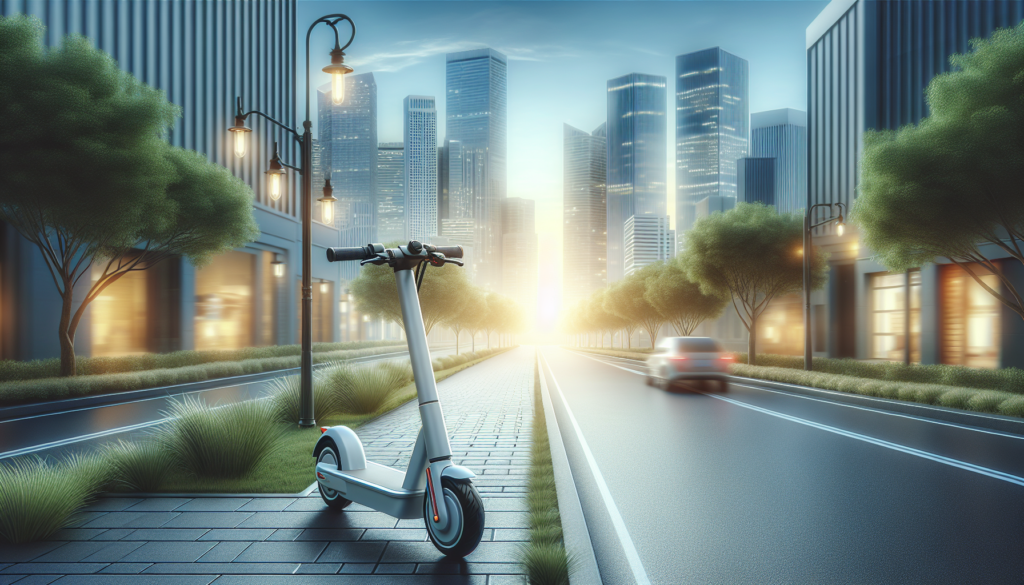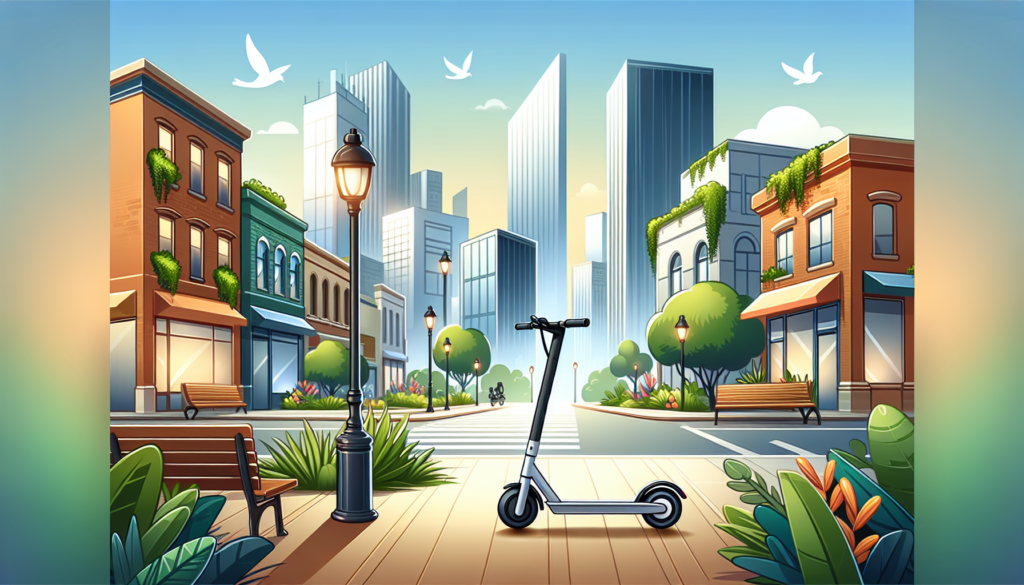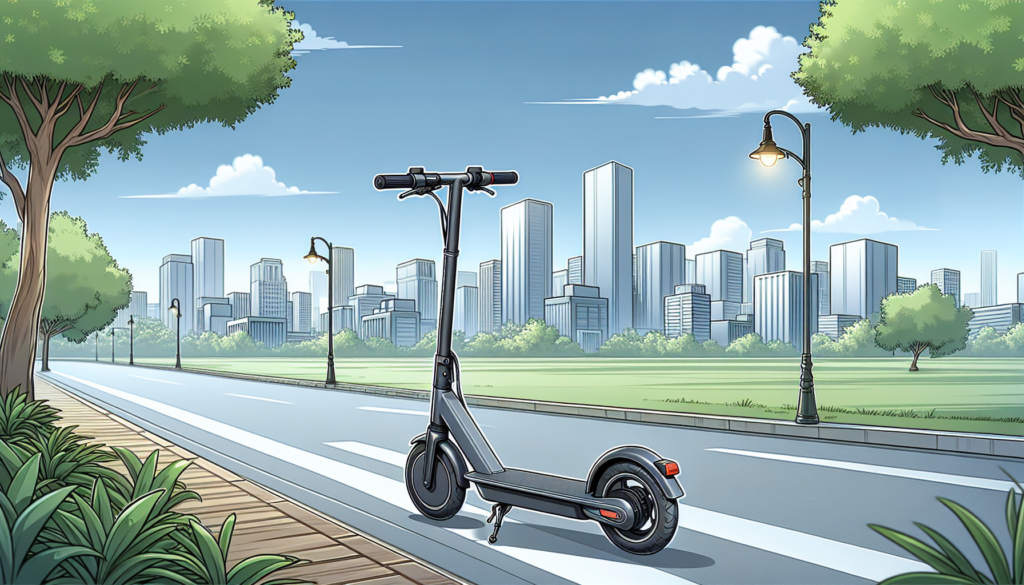
As urban environments evolve, so too must our approaches to personal mobility. In Malaysia, escooters are emerging as a dynamic solution to address the growing challenges of congestion and pollution in metropolises. Once seen merely as a trend, these electric scooters are now redefining how residents navigate city spaces with ease and efficiency. With their eco-friendly nature and convenience, escooters from EKO Life MY are not just a mode of transport, but a pivotal element in the future of urban travel in Malaysia.
The Rise of Escooters in Malaysia
In recent years, the rise of escooters in Malaysia has transformed urban mobility, providing residents with a fresh, efficient alternative to traditional modes of transport. With rapidly developing urban infrastructure and increasing traffic congestion, escooters have emerged as a preferred solution for short-distance travel in bustling city centers. The convenience, affordability, and environmental benefits of escooters appeal to a diverse demographic, including students, professionals, and tourists alike.
Notably, the initiation of multiple escooter sharing services has further fueled this trend, making it easier for users to adopt this new transport mode seamlessly into their daily routines. Malaysia’s embrace of escooters reflects a broader global trend toward sustainable urban transport solutions. As more cities recognize the need for green alternatives, the e-scooter market continues to expand, supported by favorable regulations and infrastructure development.
Charging stations are becoming more prevalent, and designated lanes for e-scooter use are increasingly integrated into urban planning. This shift signifies not just a change in how people move but also a commitment to reducing carbon footprints and enhancing the overall quality of urban life. As escooters continue to gain traction, they are set to revolutionize the future of transportation in Malaysia, paving the way for smart cities that prioritize connectivity and sustainability.
Understanding the Technology Behind Escooters
The technology behind escooters has evolved significantly, making them a viable mode of transportation in urban environments like Malaysia. At the heart of every escooter is an electric motor, which is coupled with a rechargeable lithium-ion battery that enables impressive range and efficiency. With advancements in battery technology, these scooters can travel considerable distances on a single charge, fulfilling the demands of daily commuters. Features such as regenerative braking, which recharges the battery while slowing down, further enhance their sustainability and usability.
Additionally, integrating smart technology allows riders to track their speed, distance, and battery life via mobile apps, offering a personalized riding experience tailored to their needs. Moreover, e-scooters are designed with user-friendliness in mind. Most models are lightweight and foldable, making them easy to carry onto public transport or store in small spaces, which is an invaluable feature in dense urban areas.
Safety features like LED lights, robust braking systems, and reflectors contribute to a safer riding experience, essential in bustling Malaysian cities. As municipalities continue to embrace smart city initiatives, the expansion of escooter-friendly infrastructure is anticipated, paving the way for a future where personal mobility is more efficient, sustainable, and accessible for everyone in urban Malaysia.
Urban Infrastructure Adaptations for Escooters

As the popularity of escooters continues to grow in Malaysia, urban infrastructure is evolving to accommodate this new mode of transportation. Cities are beginning to integrate dedicated escooter lanes and parking zones, enhancing safety for both riders and pedestrians. These adaptations not only help in streamlining traffic flow but also encourage more people to choose escooters over traditional vehicles, reducing congestion and pollution levels in urban areas. Local governments are increasingly recognizing the need for policies that support escooter use, such as designated routes and improved sidewalk designs to facilitate smoother integration into the urban landscape.
Moreover, the development of charging stations is becoming a priority as well, addressing one of the significant challenges faced by e-scooter users—battery life. By incorporating charging points across popular areas such as shopping centers, parks, and public transportation hubs, cities can further incentivize residents to adopt this eco-friendly transportation alternative. These urban infrastructure adaptations not only aid in the seamless implementation of e-scooters into daily commutes but also reinforce a commitment to sustainable urban development, ultimately leading to cleaner, more efficient cities for future generations.
The Environmental Benefits of Using Escooters
Escooters are emerging as a crucial component in the quest for sustainable urban transportation in Malaysia. With growing concerns about air pollution and carbon emissions, escooters offer an eco-friendly alternative to traditional vehicles. Powered by electric batteries, these scooters emit zero direct emissions, thereby significantly reducing the carbon footprint associated with urban travel. Their compact size also means they require less road space, contributing to a decrease in traffic congestion and making cities more livable. Furthermore, the seamless integration of escooters into existing public transport systems can encourage a shift away from fossil-fuel-dependent vehicles, fostering a cleaner urban environment for future generations.
Another essential aspect of e-scooters is their role in easing the strain on urban infrastructure. As cities in Malaysia grapple with increasing populations and the consequent rise in vehicle usage, e-scooters present a viable solution for short-distance travel. The lightweight design and ease of parking minimize the need for expansive parking spaces, thus freeing up public areas and reducing the urban heat island effect. By prioritizing eco-friendly modes of transport like e-scooters, Malaysia can move towards a greener future, promoting healthier lifestyles and improved air quality, thus paving the way for sustainable urban mobility.
Regulations and Safety Concerns for Escooter Users
As the popularity of escooters continues to surge in Malaysia, so do the discussions surrounding regulations and safety concerns for users. The Malaysian government is currently exploring legislative frameworks aimed at integrating escooters into the public transport system while ensuring the safety of both riders and pedestrians. These regulations are crucial as they seek to address key issues such as speed limits, designated riding areas, and helmet usage. By implementing comprehensive policies, authorities aim to enhance safety and reduce accidents, thereby encouraging more people to adopt escooters as a sustainable mode of urban transport.
Furthermore, public awareness campaigns are being initiated to educate users on safe riding practices and the importance of following local laws. This includes distributing guidelines on using e-scooters responsibly, such as wearing protective gear and being mindful of pedestrian pathways. As urban areas in Malaysia adapt to this new form of mobility, the role of regulations becomes increasingly vital in fostering a safe environment for e-scooter users and ensuring that this trend contributes positively to the urban landscape, rather than posing challenges to existing traffic dynamics.
The Future of Shared Escooter Services in Urban Areas

As urban areas in Malaysia continue to grow, the demand for efficient and sustainable transportation solutions becomes increasingly evident. Shared escooter services are poised to revolutionize urban mobility, providing a flexible alternative to traditional public transport and personal vehicles. With the proliferation of smartphones and mobile applications, it is easier than ever for users to locate, unlock, and pay for escooter rides conveniently. This hands-on accessibility not only meets the needs of a modern population but also supports efforts to reduce traffic congestion and decrease carbon emissions in densely populated cities.
Moreover, the future of shared e-scooter services in Malaysia is intertwined with the government’s push for greener initiatives and improved urban infrastructure. Local authorities are likely to implement dedicated e-scooter lanes and charge points, ensuring that these vehicles can operate safely and efficiently alongside cars and bicycles. As the cultural acceptance of shared mobility grows, it could lead to a significant transformation in commuting habits, encouraging a healthier and more ecologically responsible lifestyle. The rise of e-scooter services heralds a new era of urban transport, making cities more navigable, cleaner, and conducive to the well-being of their inhabitants.
User Experience: The Accessibility of Escooters for All
The rise of e-scooters has transformed urban mobility in Malaysia, making personal transportation more accessible than ever. With the convenience of app-based rentals, e-scooters are an easy option for a diverse range of users, from students to busy professionals. The low entry barrier, as no special licensing is required, empowers individuals who may not have access to traditional vehicles, thus creating a more inclusive travel environment. Furthermore, the lightweight design and intuitive controls of e-scooters cater to a wide age demographic, making them suitable for both younger and older riders. This democratization of transport extends the freedom to explore the city without the added stress of traffic congestion or parking limitations.
As urban areas continue to become densely populated, the importance of maintaining a smooth user experience with e-scooters grows. Accessibility features, such as designated parking zones and dedicated pathways, ensure that navigating busy streets is both safe and user-friendly. Additionally, many e-scooter providers are increasingly focusing on user feedback to enhance their platforms and services. This attention to user experience not only helps to build trust and reliability in e-scooter transport but also fosters a culture of sustainable travel in Malaysia. With the potential to revolutionize urban mobility, e-scooters are proving to be a practical choice for achieving a more connected and efficient city environment.
Comparing Escooters to Other Modes of Urban Transportation
Escooters have emerged as a formidable contender in the realm of urban transportation, particularly in Malaysia, where traffic congestion and limited public transportation options are growing concerns. Compared to traditional modes such as cars and buses, escooters offer a nimble and efficient solution for navigating dense urban environments. They provide an eco-friendly alternative, significantly reducing the carbon footprint associated with short-distance travel.
Moreover, ecoscooters are often more cost-effective when considering fuel, parking fees, and maintenance, making them an attractive option for budget-conscious commuters. Their ability to easily maneuver through traffic and utilize bike lanes empowers riders to save time and avoid the stress of stuck traffic, thus enhancing the overall travel experience in bustling cities like Kuala Lumpur.
Additionally, escooters cater to diverse user needs, distinguishing themselves from other modes of transportation like bicycles and ride-sharing services. While bicycles require physical effort and ride-sharing can incur higher costs and waiting times, escooters offer a convenient, on-demand travel experience. Riders can hop on an escooter and reach their destinations quickly without the hassle of pedal fatigue or waiting for a car to arrive. This convenience, combined with the integration of escooters in multi-modal transportation networks, positions them as a vital element of the future of urban mobility in Malaysia, paving the way for a seamless, efficient, and user-friendly travel ecosystem.
Embracing the Escooter Revolution

As we navigate through the dynamic landscape of urban mobility in Malaysia, escooters emerge as a pivotal element in shaping the future of transportation. Their rapid adoption reflects a broader shift towards sustainable travel choices, offering an efficient and eco-friendly alternative to conventional modes of transport. The increasing prevalence of escooter services not only alleviates congestion but also contributes to a cleaner urban environment, showcasing the potential of innovation in addressing contemporary challenges in city commuting.
Moving forward, it is imperative for stakeholders—including policymakers, businesses, and users—to collaborate in creating a conducive ecosystem for escooter integration. By establishing clear regulations, investing in infrastructure, and promoting awareness, Malaysia can harness the full potential of escooters, paving the way for smarter, healthier urban travel. The future of personal mobility is bright, and with escooters at the forefront, we are indeed riding into a tomorrow characterized by greater accessibility and sustainability.

Sorry but this blog summary is very unclear. Can we have more details?
Hello Leung Wee Ming, thank you for your feedback. We apologize if the blog summary was unclear. We’d be happy to provide more details about our products and services at Eko Life Malaysia. If you could please let us know what you’d like to know, we can try to update the blog summary to better address your questions. You can also contact us via [email protected] or +60 3-7890 3042 for more information.
Can you please make this summary more concise or provide a link to the full article?
Hello Shiv Kumar Jayasinghe, we appreciate you taking the time to visit our blog. Sorry for the inconvenience, and we’re happy to provide a link to the full article. Unfortunately, it seems that this blog post is the full article, but we’ll keep your suggestion in mind for creating future summaries.
I totally agree with you. Without any context, this summary is useless.
Thank you for sharing your thoughts, Rohaida! I completely understand your point, and I apologize if the summary was not clear enough. We’ll make sure to provide a more detailed and contextual summary to better support our content. If you have any suggestions on how we can improve, please don’t hesitate to reach out to us via [email protected] or +60 3-7890 3042. We appreciate your feedback!